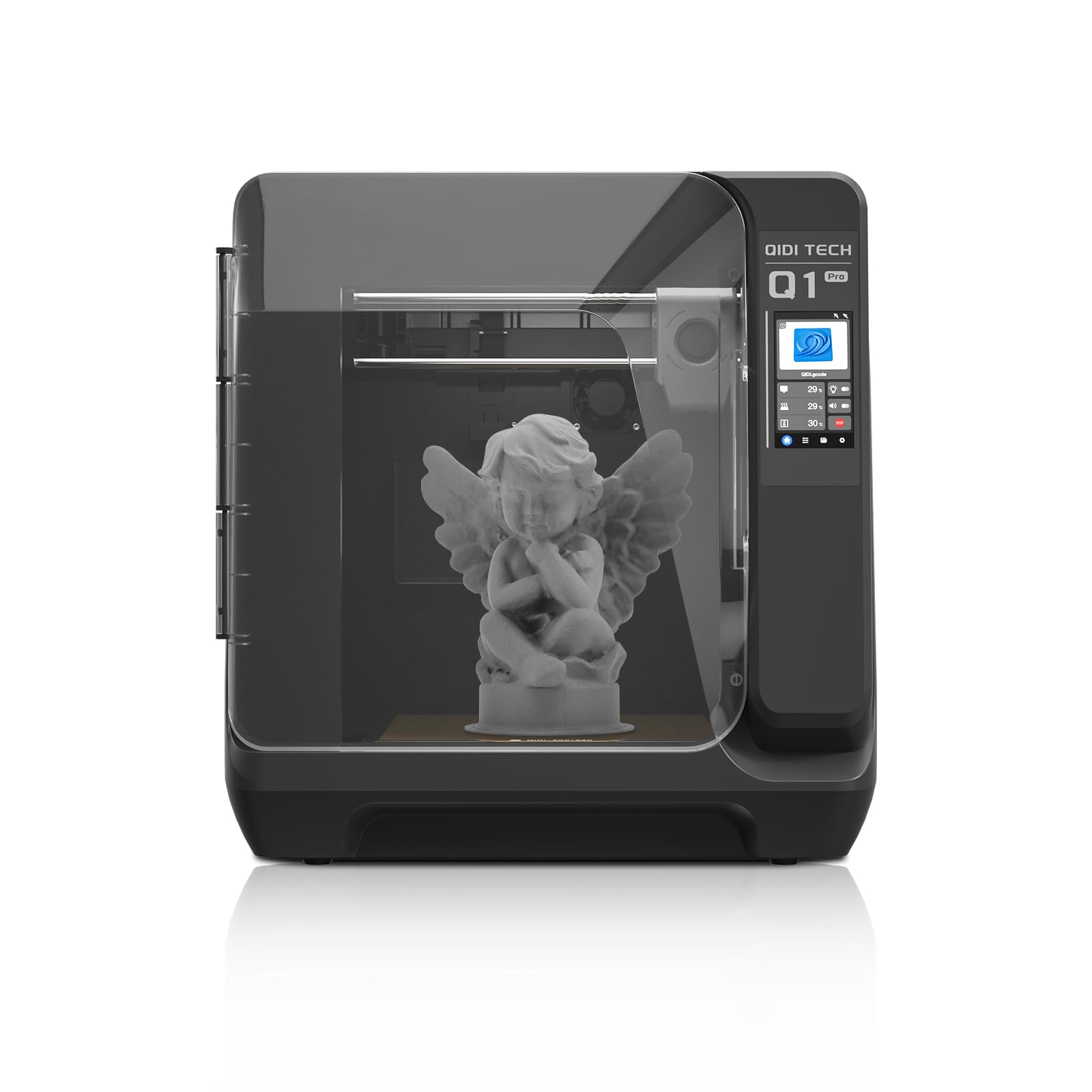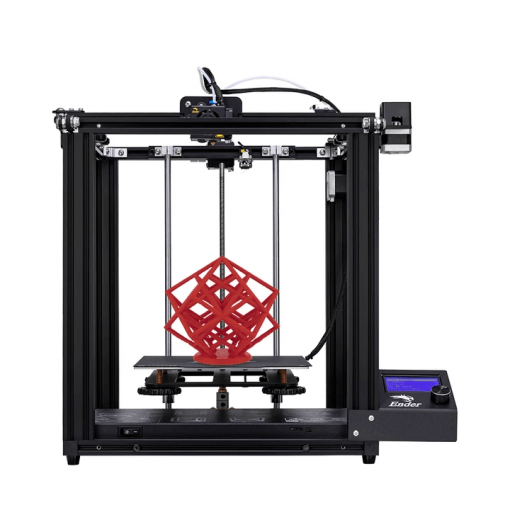Compare Q1 PRO vs Ender 5
Comparison between the best 3D printers
Choose the best 3D printer at the best price. The cheapest 3D printers are here.
Buy a 3D printer here with 3D Fila.
 |
 |
|
| Model | Q1 PRO[BUY Q1 PRO] |
Ender 5[BUY Ender 5] |
| Printing Material | Filament | Filament |
| Buy Filament for QIDI Q1 PRO | Buy Filament forCreality 3D Ender 5 | |
| Estimated price | $449,00 | $399,00 |
| Manufacturer | QIDI | Creality 3D |
| Release Year | 2024 | 2020 |
| Print Volume [mm] | 245x245x245 | 220x220x300 |
| Printer Size [mm] | 467x477x489 | 485x510x552 |
| Weight [kg] | 20 | 11,8 |
| Power Loss Recovery | YES | YES |
| Enclosed printer | YES | NO |
| Bed Leveling | Automatic | Manual |
| Filament End Sensor | YES | NO |
| Bed type | Heated | Heated |
| Power supply system | Direct Drive | Bowden |
| Standard nozzle | 0,4 | 0,4 |
| Maximum Nozzle Temperature [°C] | 350 | 255 |
| Maximum Bed Temperature [°C] | 120 | 100 |
| Maximum printing speed [mm/s] | 600 | 180 |
| Filament holder | YES | YES |
| Camera for supervision | YES | YES |
| Recommended filaments | PLA、ABS、ASA、PETG、TPU、PC、PA、PA-CF、PET-CF、PAHT-CF etc. | PLA, TPU, ABS, PETG |
| Recommended slicers | QIDI Slicer/Cura/Simplify 3D/ORCA/PRUSA Slicer | Cura, Simplify, Slic3r |
| Maximum Resolution [mm] | 0,1 | 0,1 |
| Processor | Cortex-A53,64-bit Processor | 32 bits |
| Display | Touchscreen 4,3'' | Mono |
| Power Supply | 350 W | 24V / 360W |
| Connectivity | WiFi/USB Flash Drive/Ethernet Cable | SD / USB |
| Operating systems | Windows, Linux, Macbook | Windows, Mac, Linux |
| Date of registration in the system | 2024-07-09 | 2021-04-15 |
| Release date | 2024 | 2020 |
| Extra features | The QIDI Q1 Pro 3D printer stands out for its Core XY structure and heating chambers that reach up to 60ºC, ideal for advanced materials such as ABS and Nylon. It features Klipper firmware, an automatic leveling system, a high-flow extruder with a double metal nozzle and a hotend that reaches 350ºC. It offers connectivity via Wi-Fi, USB and Ethernet, as well as a 1080p camera for remote monitoring and an intuitive touchscreen for easy operation. | Crealitys Ender 5 stands out with a solid frame and a larger 220 x 220 x 300mm print volume. Its assembly is simple and quick, offering high print quality and speeds of up to 80mm/s. With a magnetic bed, it makes it easy to remove prints. Notable for being hackable and expandable, the Ender 5 continues Crealitys innovative tradition in the affordable 3D printer market. Equipped with a 350W/24V Meanwell power supply, it heats up quickly, in addition to having efficient cable management and modified Marlin firmware. Its unique design includes dedicated stepper motors for each axis and smooth movement on the Y axis, providing more consistent and detailed prints. |
| Support for multiple colors and materials (AMS and CFS) | NO | NO |
Notes * |
||
| Cost-benefit | 8 / 10 | 7 / 10 |
| Hardware | 5.4 / 10 | 1.5 / 10 |
| Tela | . | . |
| Print volume | 3 / 10 | 3 / 10 |
| Performance | 5 / 10 | 1 / 10 |
| [BUY Q1 PRO] | [BUY Ender 5] |
Conclusion |
| In conclusion, when comparing the QIDI Q1 PRO and Creality Ender 5 3D printers, several significant differences stand out. The QIDI Q1 PRO, released in 2024, boasts advanced features such as an enclosed design, automatic bed leveling, and a higher maximum nozzle temperature, allowing for greater versatility in materials and improved printing performance. Its print volume is slightly larger, and it supports a wider range of filament types. The QIDI also includes a touchscreen interface, power loss recovery, and more advanced connectivity options like Wi-Fi and Ethernet, making it a more user-friendly choice for beginners and professionals alike. On the other hand, the Creality Ender 5, while older, is recognized for its solid build quality and ease of assembly. It has a larger print height capacity and is known for its hackability and expandability, which appeals to hobbyists looking to modify their printers. However, it lacks many of the advanced features found in the QIDI, such as automatic bed leveling and an enclosed build chamber. Ultimately, the choice between the two will depend on the user's specific needs and budget considerations. The QIDI Q1 PRO appears to be a better fit for those seeking high performance and modern features, while the Ender 5 offers a more affordable option aimed at users who prioritize simplicity and customization potential. |

